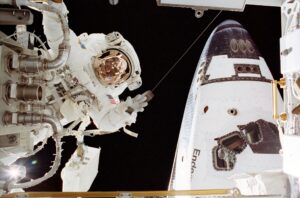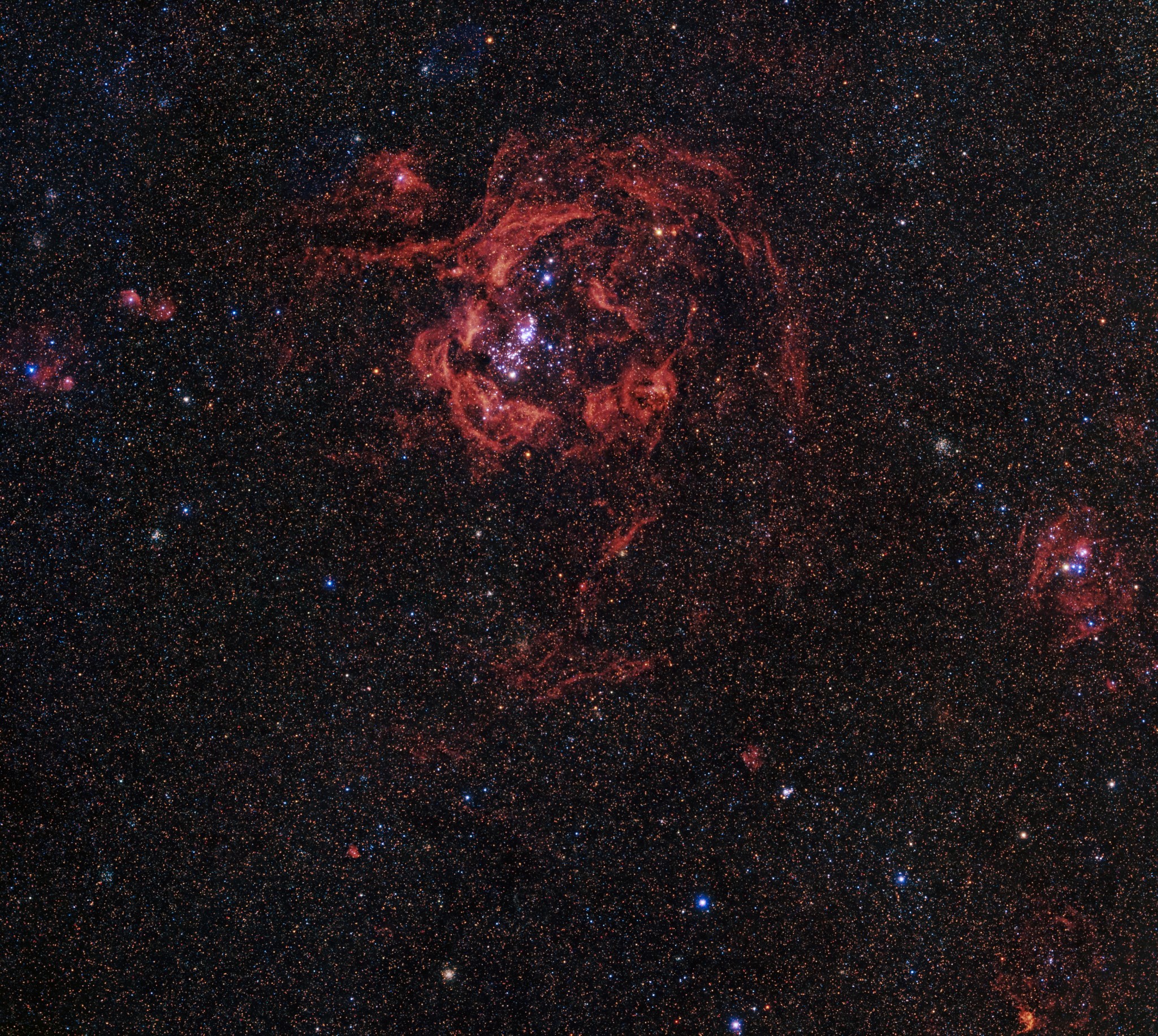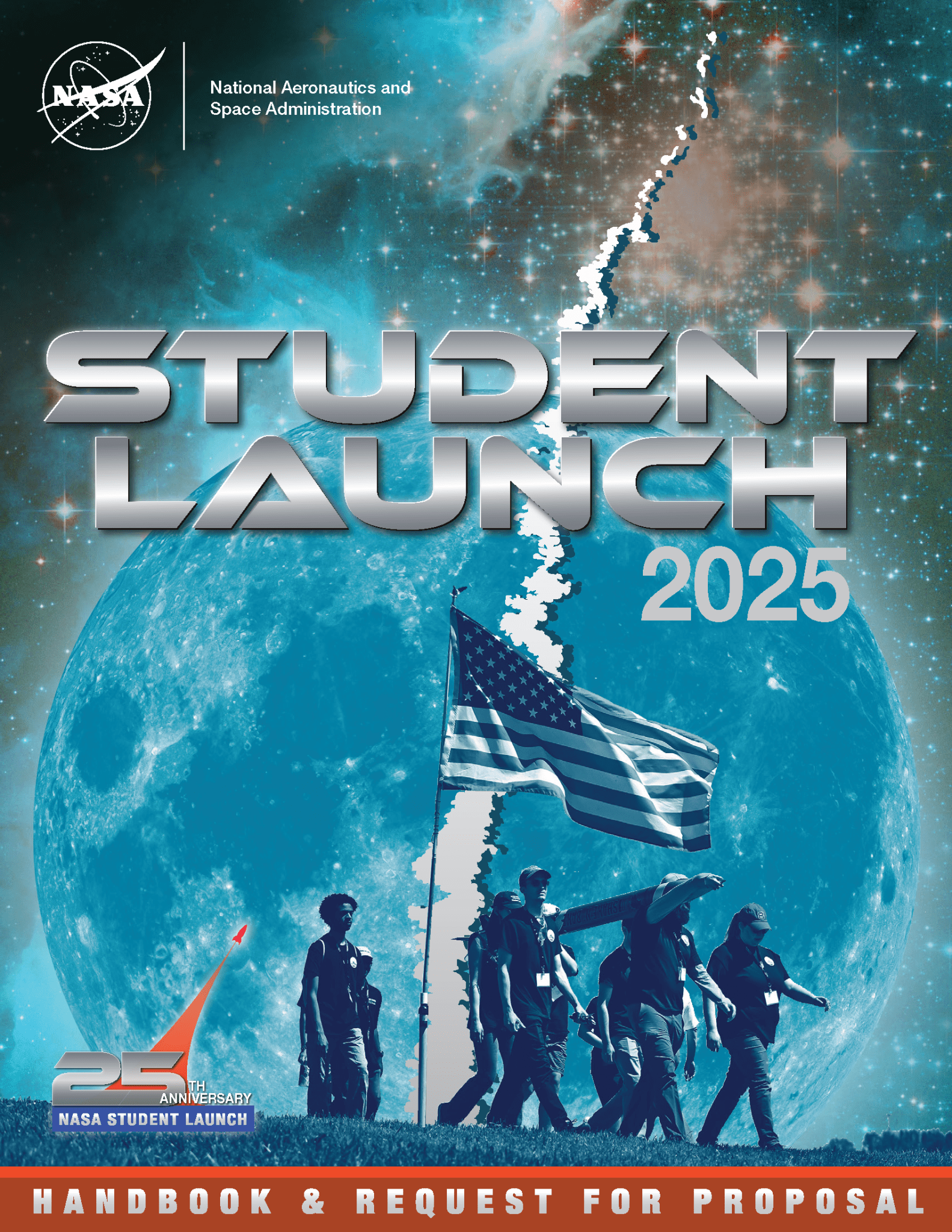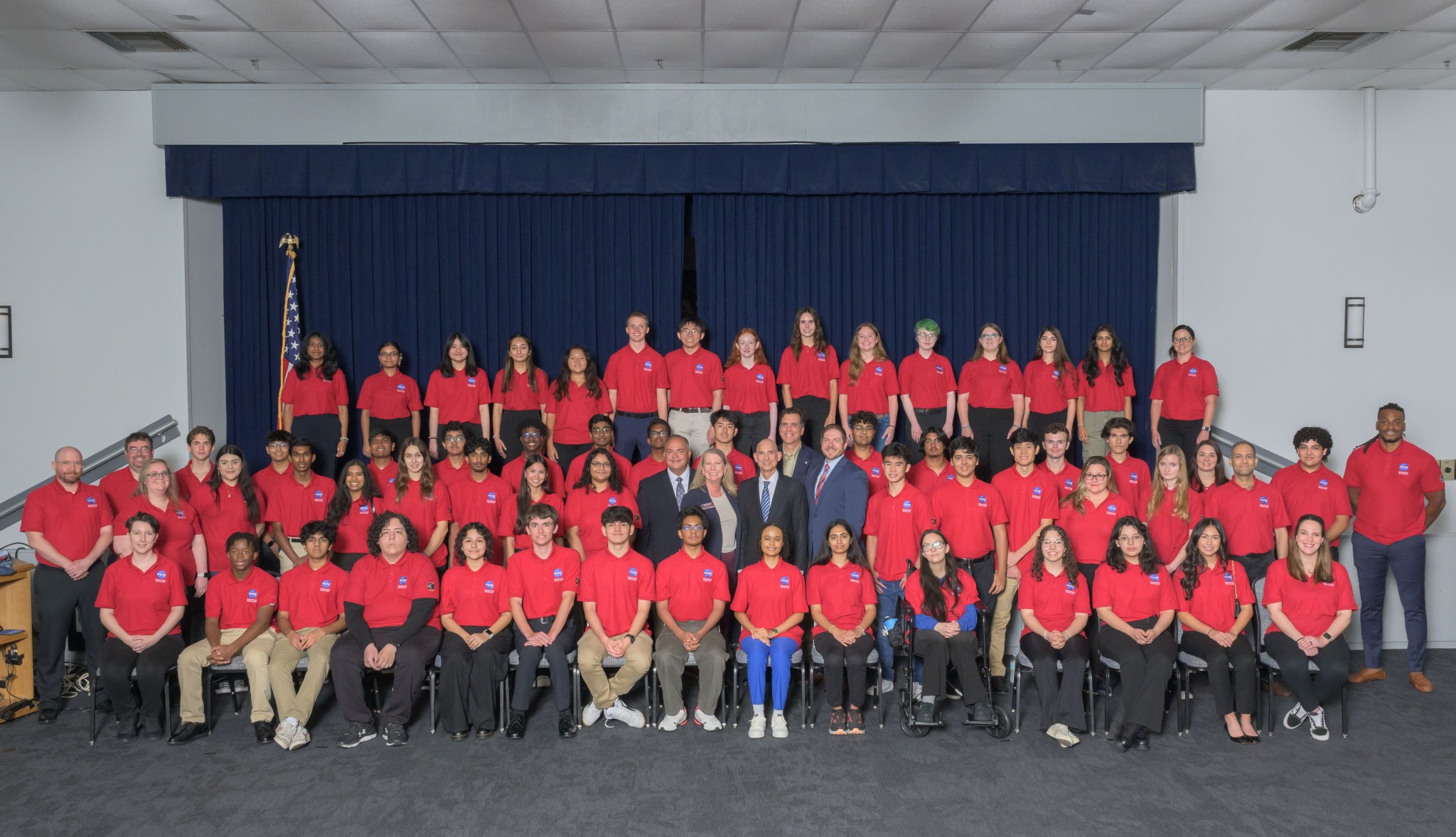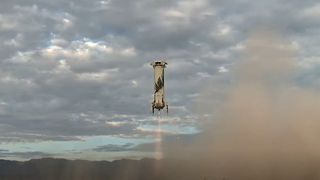NASA T-38s fly in formation above the Space Launch System rocket on Launch Pad 39B.
Read MoreNASA’s SpaceX Crew-9 Changes Ahead of September Launch
Portraits of NASA astronaut Nick Hague and Roscosmos cosmonaut Aleksandr Gorbunov. (Credit: NASA) Editor’s note: This release was updated twice on Aug. 30, 2024. First, to correct Roscosmos cosmonaut Aleksandr Gorbunov’s role as a mission specialist. It was updated again to correct a launch date. NASA astronaut Nick Hague and Roscosmos cosmonaut Aleksandr Gorbunov will launch no earlier than Tuesday, Sept. 24, on the agency’s SpaceX Crew-9 mission to the International Space Station. NASA astronauts Zena Cardman and Stephanie Wilson, previously announced as crewmates, are eligible for reassignment on a…
Read MoreHubble Zooms into the Rosy Tendrils of Andromeda
2 min read Hubble Zooms into the Rosy Tendrils of Andromeda NASA, ESA, M. Boyer (Space Telescope Science Institute), and J. Dalcanton (University of Washington); Image Processing: Gladys Kober (NASA/Catholic University of America) Clusters of stars set the interstellar medium ablaze in the Andromeda Galaxy about 2.5 million light-years away. Also known as M31, Andromeda is the Milky Way’s closest major galaxy. It measures approximately 152,000 light-years across and, with almost the same mass as our home galaxy, is headed for a collision with the Milky Way in 2-4 billion…
Read More25 Years Strong: NASA’s Student Launch Competition Accepting 2025 Proposals
4 min read Preparations for Next Moonwalk Simulations Underway (and Underwater) NASA’s Student Launch, a STEM competition, officially kicks off its 25th anniversary with the 2025 handbook. By Wayne Smith NASA’s Student Launch competition kicks off its 25th year with the release of the 2025 handbook, detailing how teams can submit proposals by Wednesday, Sept. 11, for the event scheduled next spring near NASA’s Marshall Space Flight Center in Huntsville, Alabama. Student Launch is an annual competition challenging middle school, high school, and college students to design, build, test, and…
Read MoreSeptember’s Night Sky Notes: Marvelous Moons
3 Min Read September’s Night Sky Notes: Marvelous Moons Jupiter’s largest moons, from left to right: Io, Europa, Ganymede, Callisto. Credits: NASA by Kat Troche of the Astronomical Society of the Pacific September brings the gas giants Jupiter and Saturn back into view, along with their satellites. And while we organize celebrations to observe our own Moon this month, be sure to grab a telescope or binoculars to see other moons within our Solar System! We recommend observing these moons (and planets!) when they are at their highest in the…
Read MoreAssure 2017
Home ASSURE 2017 has successfully concluded. UPDATES 2017-10-01: ASSURE 2017 concluded successfully. The accepted papers appear in the SAFECOMP 2017 Workshop Proceedings. Thank you for attending! See you in 2018. 2017-08-28: The ASSURE 2017 Program has been announced. The final program is contingent on registration. If you haven’t already done so, please register for ASSURE 2017 via SAFECOMP 2017. 2017-08-27: ASSURE 2017 will be held on Tuesday, Sep. 12, 2017. The accepted papers and program will be posted here soon. 2017-06-02: Authors of accepted papers have been notified. The final, camera-ready version and a signed copyright…
Read MoreNASA Life Sciences Portal (NLSP)
1 min read Preparations for Next Moonwalk Simulations Underway (and Underwater) NASA astronaut Steve Swanson harvests a crop of red romaine lettuce plants aboard the International Space Station. Grown from seeds in the Veggie facility, this crop is part of the Veg-01 study to help researchers test and validate the Veggie hardware. NASA NASA Life Sciences Portal (NLSP) The NASA Life Sciences Portal (NLSP) is the gateway to discovering and accessing all archive data from investigations sponsored by NASA’s Human Research Program (HRP). The HRP conducts research and develops technologies…
Read More235 Years Ago: Herschel Discovers Saturn’s Moon Enceladus
On Aug. 29, 1789, German-born British astronomer William Herschel observed a tiny bright dot orbiting around Saturn. His son later named the object Enceladus. Because of its distance from Earth and proximity to bright Saturn, for the next two centuries little remained known about Enceladus other than its size, orbital parameters, and that it held the honor as the most reflective body in the solar system. It took the Voyager flybys through the Saturn system in the early 1980s and especially the detailed observations between 2005 and 2015 by the…
Read MoreNASA Celebrates 25 Years of High School Aerospace Scholars
For 25 years, the Office of STEM Engagement (OSTEM) at NASA’s Johnson Space Center has inspired and provided high school students across the state of Texas with NASA-focused learning experiences through the High School Aerospace Scholars (HAS) program. The OSTEM team celebrated the milestone on Monday, July 29 at Johnson’s Gilruth Center with poster sessions, special presentations, and a networking reception. Fifty-one students who participated in the 2024 High School Aerospace Scholars program were invited to NASA’s Johnson Space Center in Houston to participate in an on-site experience. NASA/James Blair…
Read MoreNew record: Blue Origin launches youngest woman beyond Kármán line
Blue Origin set a new record on its latest space tourism flight. That mission, called NS-26, sent six people to suborbital space and back this morning (Aug. 29) from Blue Origin‘s West Texas spaceport, reaching a maximum altitude of 64.6 miles (104 kilometers) above ground level. One of them was Karsen Kitchen, a 21-year-old student at the University of North Carolina at Chapel Hill (UNC). According to Blue Origin, Kitchen is the youngest woman ever to cross the Kármán line, the 62-mile-high (100 km) boundary that many people regard as…
Read More



